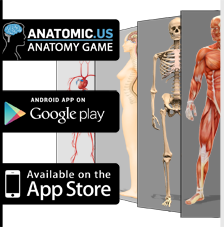Nasal Cavity
The nasal cavity is either of the two cavities of the nose, through which air enters and exits the body. The nasal cavity is the large air filled space above and behind the nose which is also called the nasal fossa. The nasal cavity conditions the air entering it for the other areas of the respiratory tract to receive it.
read more Sinus Frontalis Superior Nasal ConchalInferior Nasal Concha Nasal CavitySinus Sphenoidalis Alveoli Larynx Nasopharynx
Oropharynx Laryngopharynx Frontal SinusSphenoid SinusEthmoid Sinus Maxillary SinusBronchus Vertebrate Trachea Bronchioles Capillary Beds
Alveolar Duct Alveolar Sacs Pulmonary VeinPulmonary Artery
Nasal Cavity
The air passing through the nasal cavity is warmed or cooled to within 1 degree of the body temperature as the air is humidified. Other particulate matter entering the nose such as dust is removed by the vibrissae which are short thick hairs present in the vestibule. The nose debris gets moved to the pharynx where it passes to the esophagus and gets digested by the stomach.
The nasal cavity also allows the sensation of smell and taste to be aided. The nasal choncha (or turbinate) is a long, narrow, and curled bone shelf (shaped like an elongated seashell) that protrudes into the breathing passage of the nose. The nasal cavity is situated above the oral cavity and hard palate and below the skull base and intracranial compartment. The midline is separated by the nasal septum into the left and right sides. The nasal septum is made up of cartilage in its’ front and of bone toward the back end of the nose. There are three components of the bony septum. These parts are as follows:
Bony Septum:
-
The perpendicular plate of the ethmoid bone.
-
The vomer bone.
-
The maxilla.
Sometimes the nasal septum is off midline or crooked. When this occurs the result is the narrowing of one or both of the sides of the nasal cavity.
The left and right nasal cavities become continuous in the back of the nose through the opening to the nasopharynx, termed the choana. In this area the nasal cavity transitions into the nasopharynx, which contains a mass of centrally located lymphoid tissue called the adenoids. Each of the eustachian tubes (outlets to the ear canal) open into the sides of the nasopharynx and in doing so connect the middle ear with the upper respiratory tracts.
Report Error



